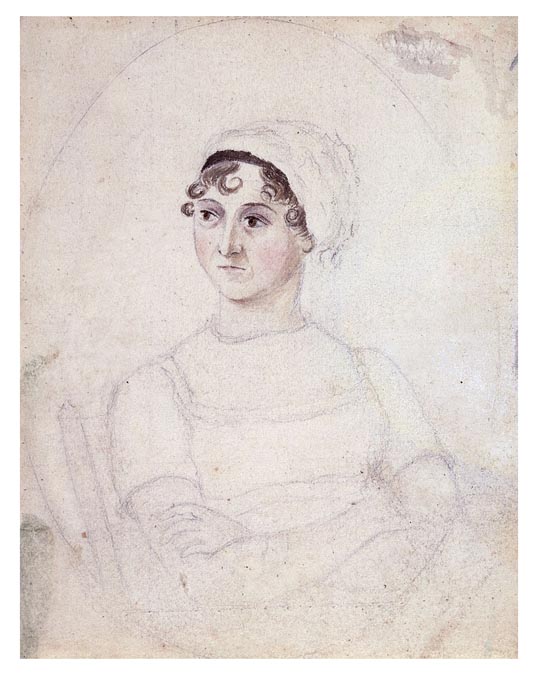
“I declare after all there is no enjoyment like reading.” —Jane Austen
The author Jane Austen was born December 16, 1775, in Steventon, Hampshire, England. Her father the Reverend George Austen was rector. Her elder sister, Cassandra, was her closest companion in a family of eight children. Her mother, Cassandra was a woman of quick wit, known for her impromptu verses and stories. The family amusement was acting.

It was in this world of the minor landed gentry and the country clergy in the village, the neighborhood and the country town, that she was to employ in the settings, characters, and subject matter of her novels.
Her first known writings date from 1787 and they contain plays, verses, short novels, and other prose. In Lady Susan, a short epistolary novel published in 1871 paints a portrait of a woman bent on the exercise of her own mind and personality. It is in effect a study of frustration of a woman’s fate in a society that has little use for her talents.
She gave her novels modern characters and treated them as ordinary people in everyday life. She published only four novels during her lifetime. She vividly depicted English middle-class life during the early 19th Century. Even two centuries after her death, the novels defined the era of manners and have become timeless classics.
In 1811 she wrote Sense and Sensibility, Pride and Prejudice in 1813, Mansfield Park in 1814 and Emma in 1815. Persuasion and Northanger Abbey were published together posthumously in 1817.
Pride and Prejudice follows the character development of Elizabeth Bennett who learns the difference between superficial goodness and actual goodness. It has become one of the most popular novels in English literature with more than 20 million copies sold. Dramatic adaptations, reprints, unofficial sequels, films, and TV versions have portrayed the memorable characters and theme of the novel which have reached mass audiences.
In 1802, Jane agreed to marry Harris Bigg-Wither, the 21-year old heir of a Hampshire family, but the next morning changed her mind. Austen’s novels are so deeply concerned with love and marriage that there is little evidence of any of her other relationships with the record unsatisfactory and incomplete.
Young women such as Jane and her sister, Cassandra, would be tutored by their mothers and Mrs. Austen found the time to teach her daughters how to read and write. Mrs. Austen was good at making things with her hands that was the perpetual duty of any well-bred young lady. Jane was especially good at sewing. The atmosphere of the Austen home was open, amused, easy intellectual. Ideas of all kinds were considered and discussed. Relatives who had returned from London would bring news of their travels and fashionable London life which helped to widen Jane’s youthful horizon and influence her later life and works.
July 22, 1817 the announcement of Jane’s death appeared in the Courier newspaper probably drafted by sister Cassandra. Jane was a writer, and a lady, with manners, most gentle, her affections ardent and her candor not to be surpassed. She lived and died as became a humble Christian.

